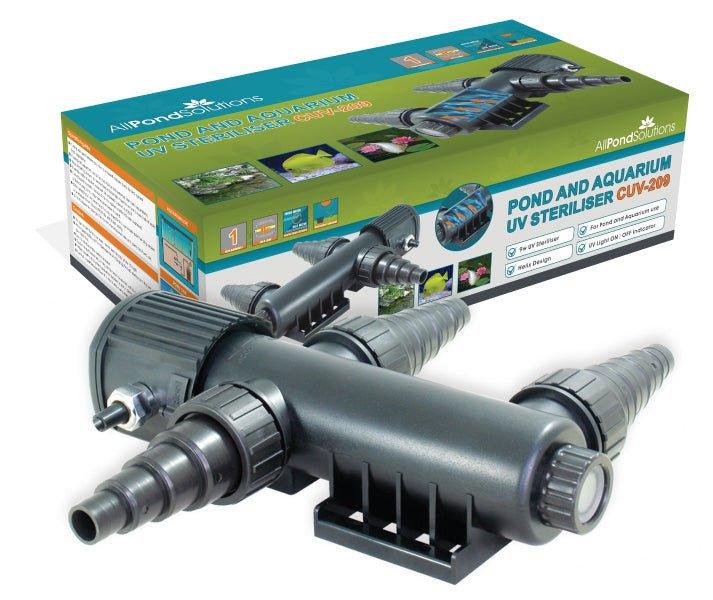How To Set Up Your Fish Tank
One of our customers sent us this image of their fully set-up aquarium which features our External Filter, ensuring it has crystal clear waters.
Fish Tank Setup guide
Different types of aquariums have different needs – freshwater vs saltwater, tropical vs coldwater, fish-only vs planted. We created this essential guide with top tips for fish tank set-up and maintenance, no matter the type of tank. With these tips, you’ll be able to watch your fish thrive.
Essential Tips for Aquarium Set-up
Research the type of fish
This might seem obvious, but it’s easy to make a mistake and put the wrong kind of fish into the wrong kind of aquarium. Are you keeping coldwater, tropical or marine fish? Make sure you know the conditions and environment your fish species need, as well as how big they’re likely to grow.
Pick a good location
Choosing the right spot for your fish tank is important. It must be away from direct sunlight to prevent algae growth, and away from any heating or cooling to manage water temperature. On the other hand, it must be near to an electrical outlet for its various equipment, and near to a water supply for easy water changes. Most importantly, you want it to be convenient to admire and enjoy!
Get all the essential equipment
There’s some equipment that every aquarium needs. A good filter is always crucial; see our guide to the best filters for your tank. You’ll also need lighting and gravel, and a heater if you have tropical fish. It can seem like a lot to purchase upfront, but the initial investment will pay off in the long run.
Rinse all gravel and decorations
Your gravel and decorations might be brand new, but that doesn’t mean they’re clean. They can be carrying lots of dust, which can make your aquarium dirty from the very beginning. Before adding them to the tank, rinse all gravel and decorations until the water drains clear. Soap is toxic for fish, so stick to plain water when cleaning them.
Create a varied environment
Give your fish the best possible life by creating a varied aquarium environment. This doesn’t mean having the fanciest or craziest decorations. It simply means taking a deliberate, creative and thoughtful approach to aquascaping your aquarium. By giving your fish different areas to explore, you mimic the environment they would have in nature. Areas with flowing water, caves and quiet spots give your fish room for diverse behaviour, making them more active and engaged.
Dechlorinate and test water
Always dechlorinate tap water before adding it to the tank. Untreated tap water contains chlorine, chloramines and metals that are all dangerous for fish. Adding a liquid dechlorinator to the water before filling your tank will remove these harmful chemicals and protect your fish. Once you’ve filled the tank, test the water before adding your fish. Water temperature, salinity, gravity, pH, ammonia and nitrite levels all need to be monitored.
Avoid overcrowding
Less is more when it comes to fish. As tempting as it might be to fill your tank with as many fascinating fish as you can find, overcrowding stresses out fish and dirties your tank. Always start with a few fish and gradually add others over several weeks.
Essential Tips For Aquarium Maintenance
Keep aquarium equipment separate
Don’t use your aquarium equipment for other purposes. Set aside and label buckets, nets, towels and sponges that you only use for your aquarium. This will reduce the risk of harmful pollutants entering your tank.
Avoid overfeeding
Many fishkeepers, with the best of intentions, overfeed their fish. Fish don’t need to eat a lot; small feedings once or twice a day are enough to keep them healthy and happy.
Be consistent with tank maintenance
Fish are often thought of as low maintenance pets. In some ways, they are. But, just like with any pets, you need to put in some work to maintain them. This includes replacing your filter cartridge every few weeks, cleaning your tanks regularly and partially changing your water every week or two. It’s always better to do regular maintenance than large seasonal cleanings, as these can remove useful bacteria and disrupt the fish.
Look out for sick fish
Fish can become sick for several reasons – overfeeding, overcrowding, the introduction of a new fish carrying a disease, or unhygienic tank conditions. Keep an eye out for general signs of illness, such as clamped fins, irritated skin and bulging eyes, as well as fish that are behaving very aggressively or passively. Some diseases will have tell-tale symptoms, like the whitish-green threads that indicate anchor worm or the protruding scales that warn of dropsy.
Prepare for holidays
If a friend is watching your fish while you’re away, make sure you’re prepared. Go over your plan with them in advance, and answer any questions. Stock up on essentials like filter media and fish food. Invest in an automatic aquarium feeder to ensure that fish are fed regularly and correctly, and a light timer to ensure they receive the right amount of light while you’re away.
We have different categories of fish tanks available for all types of fishkeeping.
